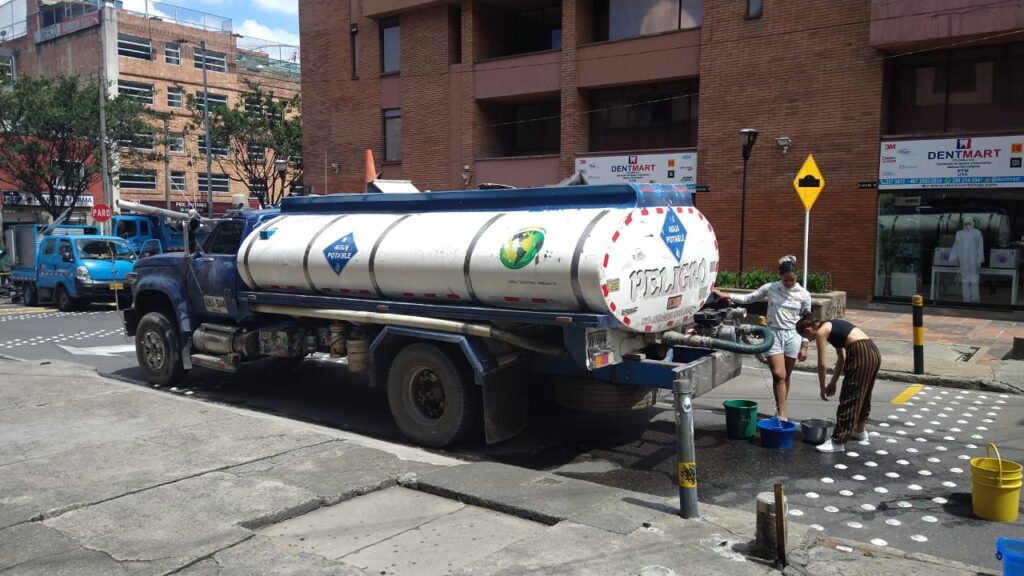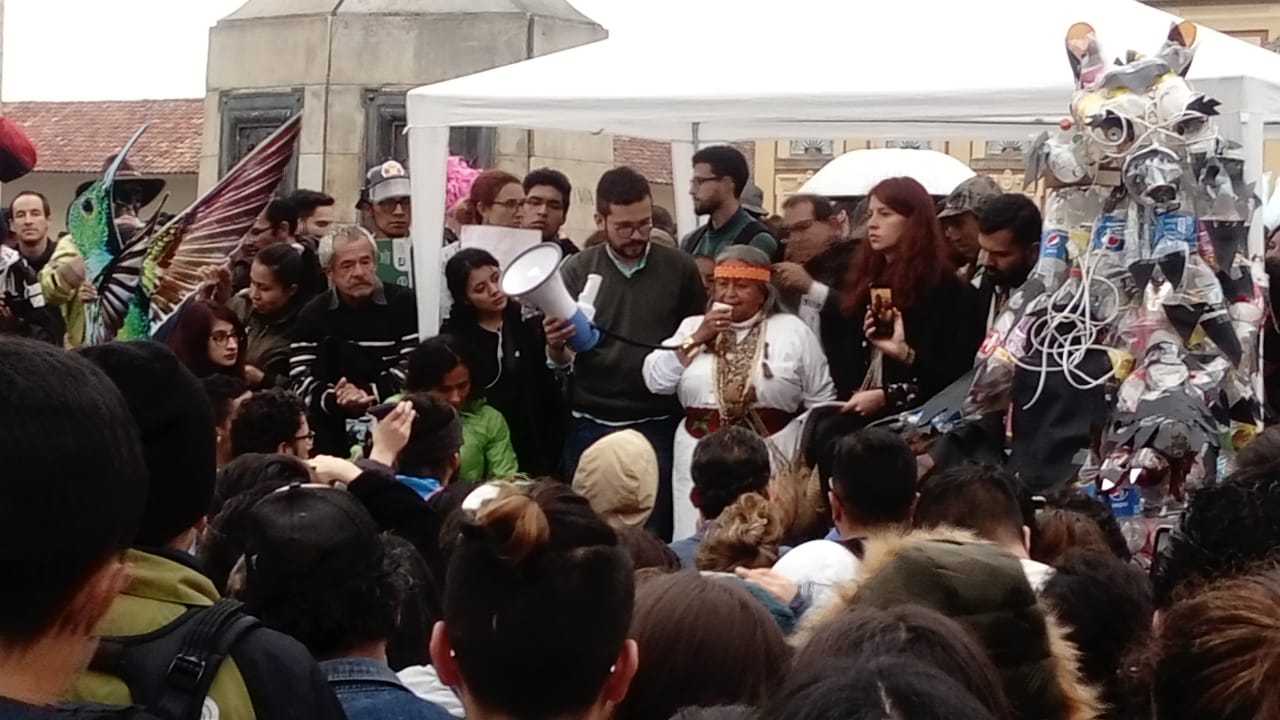The year-long water rationing in Bogotá has finally come to an end, but structural issues persist.

A beautifully sunny April morning greeted the news that water rationing has come to an end in Bogotá. The sun was high in the sky for the first time in a while after the traditional spring downpours that have refilled the city’s water supplies.
We’re not out of the woods yet, though, with many of the problems leading to the rationing decision still very much on the table. Indeed, a large wedge of the city was still without water on Saturday morning due to a tank fault.
Those problems won’t go away overnight, or for free. In fact, there’s a good chance they’ll get significantly worse. Bogotá continues to grow and continues to use ever more of everything. Acueducto has managed to avoid serious sanction and seemingly done little to improve things over the past year.
Climate change appears to already be with us, even if unpredictable. The twin El Niño and La Niña effects have varied wildly in strength in recent cycles, with the current La Niña being very weak and the last El Niño being both long and severe. This requires changing systems to account for a new reality.
The crisis has been averted, but lessons desperately need to be learnt in order to avoid similar issues in the future. However, little in the recent history of Bogotá suggests that will be possible, owing to a combination of factors.
A year without water
Water rationing began on April 11, 2024, with mayor Galán announcing that the city had been divided into nine zones, each of which would be cut off for 24 hours in turn.
The reality of that was somewhat different. Water was often cut off before 8am and rarely came back until much later the following day.
The measures sharply divided opinions. While most in the city grumbled and got on with things, it was impossible to ignore the inequalities of experience. Richer neighbourhoods often fell back to using reserve tanks, less common in poorer areas.
White-collar workers found it easier to switch to remote working and richer residents simply left town when necessary. Exceptions were made for certain businesses and illegal hook-ups were found to be operating.
Watering Concrete
This will be one of the biggest challenges for the city in the long term. While on paper it’s the easiest to achieve, reality tells a different story.
With the city historically having plenty of water, people are accustomed to high and often frivolous usage levels – for example simply hurling buckets of water at windows like Tibetan monks, or watering the concrete outside a shop to keep it cool.
As the city has grown both economically and physically, this has put ever more strain on the system. More people can afford to use more water each, leading to a spiral. That’s repeated across the infrastructure panorama, too. Similar problems exist with power, transport, rubbish collection and so on.
Most worryingly, alcaldias always want to solve this problem through education, which ticks all their boxes. It’s relatively cheap, doesn’t irritate anyone, has great optics and provides jobs for their mates. The only problem? It doesn’t actually work.
High profile awareness-raising and the like is simply ignored when it’s inconvenient for people and with no solid deterrent alongside, is doomed to fail. Even arriving at the point of actual water rationing barely made a dent in habits.
However, the alternatives aren’t going to win you any friends or voters, either. It will mean fining people, shutting places down and forcing Acueducto to spend money. Worse still, it will mean spending public money. That will lead to future savings for different politicians but be an inconvenient short-term expense for those in power now.
All of that means short term thinking and kicking the can down the road. Sooner or later Colombia as a whole, not just Bogotá, will have to address the problem of rising consumption – either by building lots more infrastructure or forcing a decline. Good luck getting either of those done.
Acueducto
At least we were all saving money with four or five days per month of zero consumption, though, right? Wrong. It seems that owning a utility service in Colombia is simply a license to print money. There were no subsidies or relief rates put in place over the year by Acueducto, the waterworks company of Bogotá.
On the one hand, this makes sense – the company desperately need money to literally patch holes and find solutions. On the other, it’s incredibly galling to see your bill increasing every two months for what amounts to an often laughably poor service.
There are a famously huge number of leaks throughout the system and Acueducto seem to have little interest in patching them up. After all, a fair few of those leaks simply mean their clients are paying more, as long as they’re on your side of the connection.
Few backup systems and rerouting channels exist, meaning that faults such as the one in San Diego can cut off a swathe of the city at a stroke. This isn’t particularly common, but it’s certainly far from unknown . It’s easy to see why many people resent paying high bills for a service like this.
Deep drilling for groundwater may have to come back onto the table, despite historically abundant surface water supplies. That’s problematic, as it’s both costly and environmentally destructive. Not to mention, it’s simply sidestepping the problems of infrastructure. If it’s used to buy time or provide emergency reserves, it makes sense. As a primary source, it’s not ideal.
Whatever the company does do going forward, there’s little public hope for it being effective, cost-efficient or long-termist. Like most of the public utilities in Bogotá, poor service is both expected and received.





